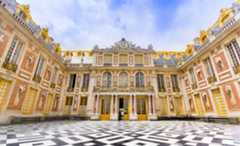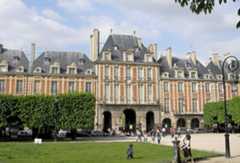Our editors will review what you’ve submitted and determine whether to revise the article.
- HistoryWorld - History of Architecture
- Humanities LibreTexts - Architecture Design, Methods, and Materials
- Open Library Publishing Platform - Contemporary Digital Humanities - Architectures
- Art in Context - What is Architecture? � A dive into the world of Architecture in art
- Open Oregon Educational Resources - Introduction to Architecture - Defining architecture
- IOPscience - IOP Conference Series: Materials Science and Engineering - Architecture as a Consequence of Perception (PDF)
- Stanford Encyclopedia of Philosophy - Philosophy of Architecture
- What is architecture?
- What are the main purposes of architecture?
- How has architecture evolved over time?
- What are some different styles of architecture?
- What materials are commonly used in architecture?
- How does architecture differ across various cultures?
- What role do architects play in designing buildings?
- How does sustainable architecture benefit the environment?
architecture, the art and technique of designing andbuilding, as distinguished from the skills associated withconstruction. The practice of architecture is employed to fulfill both practical and expressive requirements, and thus it serves both utilitarian andaesthetic ends. Although these two ends may be distinguished, they cannot be separated, and the relative weight given to each can vary widely. Because every society—settled or nomadic—has a spatial relationship to the natural world and to other societies, the structures they produce reveal much about theirenvironment (includingclimate andweather),history, ceremonies, and artistic sensibility, as well as many aspects of daily life.
Thecharacteristics that distinguish a work of architecture from other built structures are (1) the suitability of the work to use by human beings in general and the adaptability of it to particular human activities, (2) the stability and permanence of the work’s construction, and (3) thecommunication of experience and ideas through its form. All these conditions must be met in architecture. The second is a constant, while the first and third vary in relative importance according to the social function of buildings. If the function is chiefly utilitarian, as in afactory, communication is of less importance. If the function is chiefly expressive, as in a monumental tomb, utility is a minor concern. In some buildings, such as churches and city halls, utility and communication may be of equal importance.
The present article treats primarily the forms, elements, methods, and theory ofarchitecture. For the history of architecture in antiquity,see the sections on ancientGreece andRome inWestern architecture; as well asAnatolian art and architecture;Arabian art and architecture;Egyptian art and architecture;Iranian art and architecture;Mesopotamian art and architecture; andSyro-Palestinian art and architecture. For later historical and regional treatments of architecture,seeAfrican architecture;Chinese architecture;Japanese architecture;Korean architecture;Oceanic art and architecture;Western architecture;Central Asian arts;Islamic arts;South Asian arts; andSoutheast Asian arts. For a discussion of the place of architecture and architectural theory in the realm of the arts,seeaesthetics. For related forms of artistic expression,seecity;interior design; andurban planning.
Use
The types of architecture are established not by architects but by society, according to the needs of its different institutions. Society sets the goals and assigns to the architect the job of finding the means of achieving them. This section of the article is concerned with architecturaltypology, with the role of society in determining the kinds of architecture, and with planning—the role of the architect in adapting designs to particular uses and to the general physical needs of human beings.
















